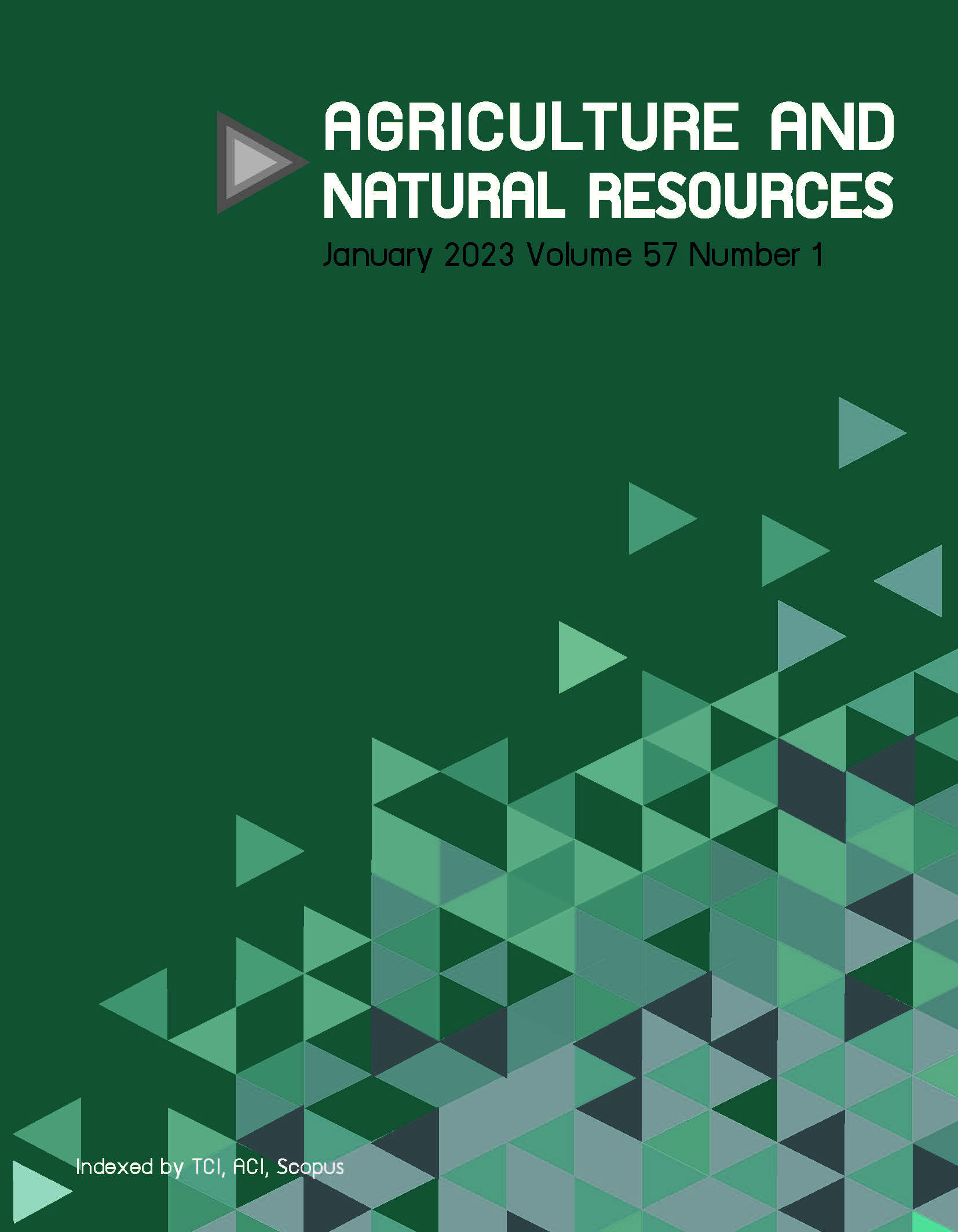Correlation between resident birds and anthropogenic noise and particulate matter: A case study at Kasetsart University, Bangkok, Thailand
Keywords:
Anthropogenic noise, Kasetsart University, Particulate matter, Urban birdsAbstract
Importance of the work: Urban ecosystems are among the most polluted due to anthropogenic development, with humans and wildlife being affected by this pollution.
Objectives: To examine the presence of some birds and their correlation to pollution in the kind of anthropogenic noise and particulate matter (PM).
Materials & Methods: Sixty bird species were identified in the case study, of which the individual presence of 21 common residents was analyzed for their correlation to pollution using negative binomial regression.
Results: Seven species were significantly correlated to the pollution. Five species (Pycnonotus goiavier, Spilopelia chinensis, Pycnonotus conradi, Passer montanus and Copsychus saularis) had a negative relationship to anthropogenic noise, while two species (Dicaeum cruentatum and Columba livia) had a negative relationship to the particulate matter levels PM10 and PM2.5. The results suggested that 14 resident bird species had adapted to living in the urban ecosystem.
Main finding: Suggested policies to minimize the impacts on bird populations on campus were: restricting vehicle access; controlling noise levels; controlling black exhaust smoke emission; and promoting car- and pollution-free travel.
Additional Files
Published
How to Cite
Issue
Section
License
Copyright (c) 2023 Kasetsart University

This work is licensed under a Creative Commons Attribution-NonCommercial-NoDerivatives 4.0 International License.
online 2452-316X print 2468-1458/Copyright © 2022. This is an open access article under the CC BY-NC-ND license (http://creativecommons.org/licenses/by-nc-nd/4.0/),
production and hosting by Kasetsart University of Research and Development Institute on behalf of Kasetsart University.







